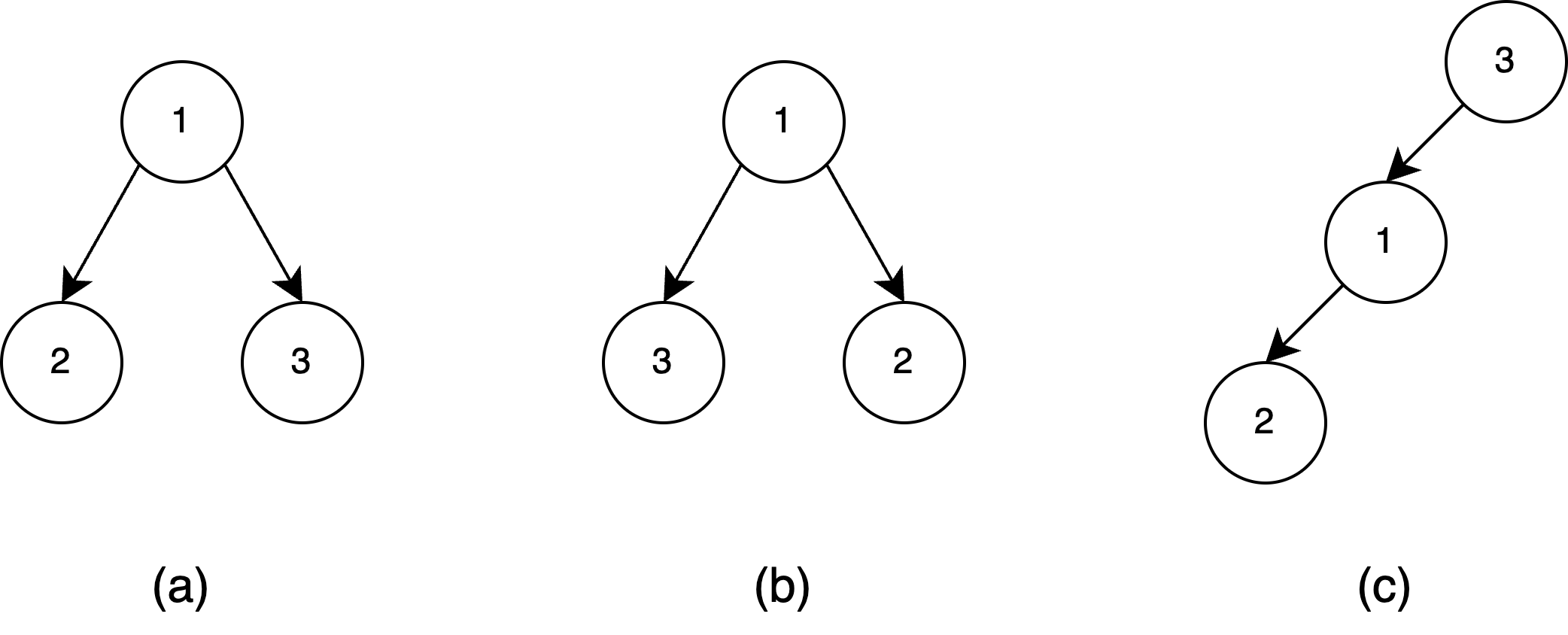Description
Procat has some maps. But some of them are duplicated. He will give you two of them $X$ and $Y$, hoping you could determine whether they are the same or not.
Each map is a rooted tree. The tree consists of $N$ vertices, numbered from $1$ to $N$. There are exactly one simple path between any two vertices.
Procat will give you the map in a special format. The format is described by the following EBNF (Extended Backus–Naur form):
TREE := INT '(' TREE ')' '(' TREE ')' | NIL
It means that a tree is a integer followed by two subtrees or a NIL. The integer represents which vertex the root of the tree is. If the tree is a NIL, it means that the tree is empty.
Two maps are considered the same if and only if they have the same root and for every pair of vertices $(u, v)$ $(1 \le u, v \le N)$, which means the path from $u$ to $v$ in the first map is the same as the path from $u$ to $v$ in the second map.
Let's look at some examples. In the figure below, tree (a) will be represented as 1(2()())(3()()), tree (b) as 1(3()())(2()()), and tree (c) as 3(1(2()())())(). However, only tree (a) and tree (b) are considered the same.

Input
Input contains three lines. The first line contains an integer $N$, the number of vertices in each map.
For the following two lines, each line contains a string, representing map $X$ and $Y$ respectively in the EBNF format.
$N$
$X$
$Y$
Constraints
- $1 \leq N \leq 10^5$
- length of $X$ and $Y$ won't exceed $10^6$ characters
- $X$ and $Y$ only contains characters
'(',')'and digits.
Output
If the two maps are the same, output "YES". Otherwise, output "NO".
Noted that you should output only one single line.